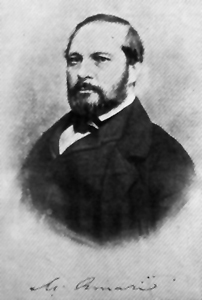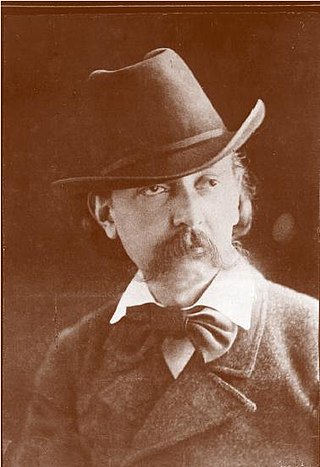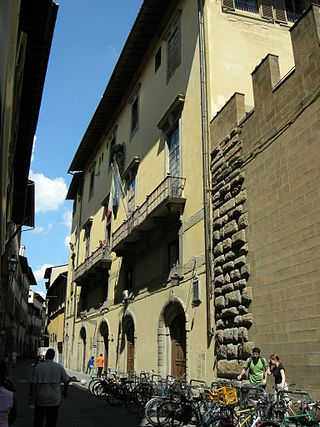Related Research Articles

Giovanni Carmelo Verga di Fontanabianca was an Italian realist (verista) writer, best known for his depictions of life in his native Sicily, especially the short story and later play Cavalleria rusticana and the novel I Malavoglia.

Vizzini is a town and comune in the Metropolitan City of Catania, on the island of Sicily, southern Italy. It is located 60 kilometres (37 mi) from Catania in the Hyblaean Mountains, on the most northwesterly slopes of Monte Lauro.

The Province of Catania was a province in the autonomous island region of Sicily in southern Italy. Its capital was the city of Catania. It had an area of 3,552 square kilometres (1,371 sq mi) and a total population of about 1,116,917 as of 31 December 2014.

Michele Benedetto Gaetano Amari was a Sicilian patriot, liberal revolutionary and politician of aristocratic background, historian and orientalist. He rose to prominence as a champion of Sicilian independence from the Neapolitan Bourbon rule when he published his history of the War of the Sicilian Vespers in 1842. He was a minister in the Sicilian revolutionary government of 1848–9 and in Garibaldi's revolutionary cabinet in Sicily in 1860. Having embraced the cause of Italian unification, he helped prepare the annexation of Sicily by the Kingdom of Sardinia and was active in his later years as a senator of the Kingdom of Italy.

Caltagirone is an inland city and comune in the Metropolitan City of Catania, on the island of Sicily, southern Italy, about 70 kilometres (43 mi) southwest of Catania. It is the fifth most populous municipality of the Metropolitan City, behind Catania, Acireale, Misterbianco and Paternò. Alongside Catania, it is the only town who is seat of a tribunal in the former province. Since 1987, the comune has obtained the City title, through presidential act. After Caltanissetta, it is the second most populous comune in Central Sicily.

Castello Ursino, also known as Castello Svevo di Catania, is a castle in Catania, Sicily, southern Italy. It was built in the 13th century as a royal castle of the Kingdom of Sicily, and is mostly known for its role in the Sicilian Vespers, when it became the seat of the Sicilian Parliament. The castle is in good condition today, and it is open to the public as a museum.

The Codex Atlanticus is a 12-volume, bound set of drawings and writings by Leonardo da Vinci, the largest single set. Its name indicates the large paper used to preserve original Leonardo notebook pages, which was used for atlases. It comprises 1,119 leaves dating from 1478 to 1519, the contents covering a great variety of subjects, from flight to weaponry to musical instruments and from mathematics to botany. This codex was gathered in the late 16th century by the sculptor Pompeo Leoni, who dismembered some of Leonardo's notebooks in its formation. It is now in the Biblioteca Ambrosiana in Milan.

The Archdiocese of Siracusa, also known as Syracuse, is a Latin Church ecclesiastical territory or diocese of the Catholic Church in Sicily. It became an archdiocese in 1844. The current archbishop is Francesco Lomanto.

The Archdiocese of Catania is a Roman Catholic ecclesiastic territory in Sicily, southern Italy, with its seat in Catania. It was elevated to an archdiocese in 1859, and became a metropolitan see in 2000. Its suffragans are the diocese of Acireale and the diocese of Caltagirone.

Mario Rapisardi was an Italian poet, supporter of Risorgimento and member of the Scapigliatura.

The Biblioteca Riccardiana is an Italian public library under the aegis of the Ministry of Culture, located inside the Palazzo Medici Riccardi at 10 Via de’ Ginori in Florence, in the neighborhood comprising the Mercato Centrale and the Basilica di San Lorenzo. Its main feature is preserving books collected by members of the Riccardi family and making them available in the very same rooms that were originally dedicated to that purpose. So, still today the library boasts the magnificent bookshelves, neatly carved and gilded, that create the atmosphere of a late-seventeenth-century patrician library, whose main features have all been kept intact.

The Biblioteca Palatina or Palatina Library was established in 1761 in the city of Parma by Philip Bourbon, Duke of Parma. It is one of the cultural institutions located in the Palazzo della Pilotta complex in the center of Parma. The Palatina Library was named after Apollus Palatinus.

The Scarabelli library is the public library in the city of Caltanissetta in the centre of the island of Sicily, Italy. In 1862, the library was established by Antonio Mordini in the premises of the former Jesuit convent.
Antonino Bonaccorsi also called il Chiaro was an Italian painter.

Michele Rapisardi was an Italian painter.
Alessio di Giovanni was an Italian poet, novelist, and playwright. Much of his work is in Sicilian.

Fisichella is an Italian noble family, forming part of the Sicilian nobility. Members of the family include multiple judges and prelates, among them a justice of the Supreme Court of the Kingdom of Sicily and an archbishop of the Roman Catholic Church.

Giuseppe Gandolfo was an Italian painter, active mainly in Sicily in a Neoclassical style.

Asmundo is an old Sicilian noble family that has played a notable role in the island's political, cultural, and economic history.

Ignazio Paternò Castello, Prince of Biscari was an Italian polymath, antiquarian, and patron of the arts, who lived most of his life in his native Catania in Sicily.
References
- ↑ Catalogo ragionato della Biblioteca Ventimilliana esistente nella regia Università degli Studi di Catania.
- ↑ Dizionario biografico universale, Volume 5, by Felice Scifoni, Publisher Davide Passagli, Florence (1849); page 200.